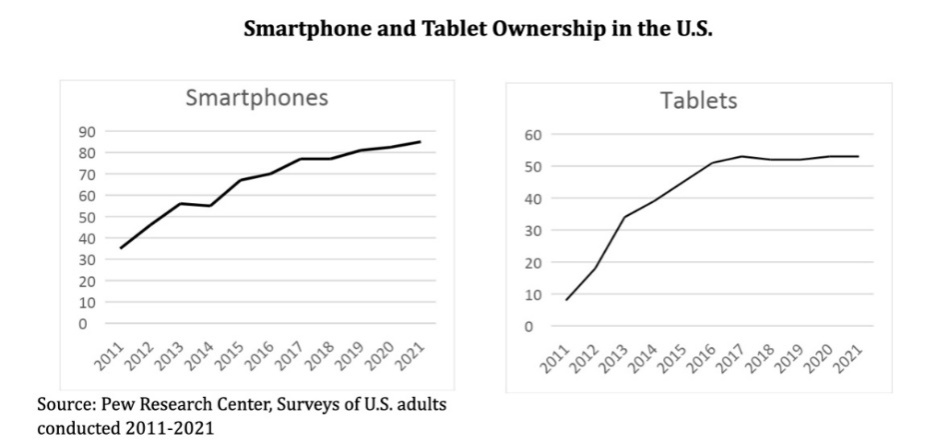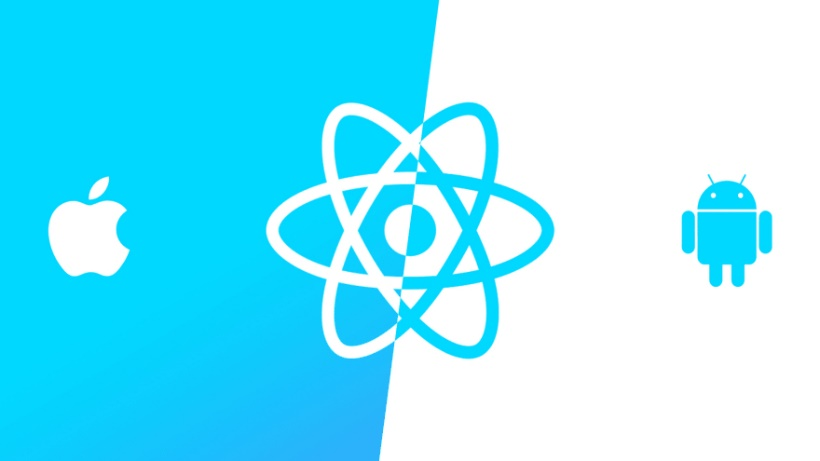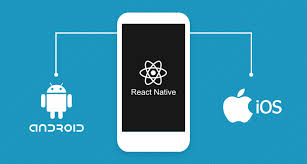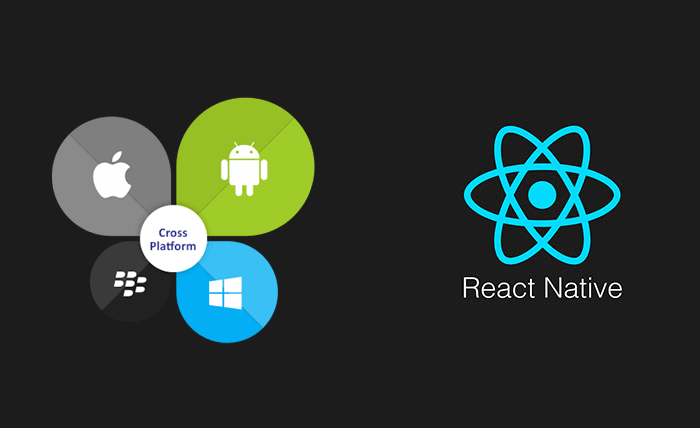Email Address: contact@softwareistic.com | Phone Number: (844) 970-3900
Email Address: contact@softwareistic.com | Phone Number: (844) 970-3900
These days you can count people you know who don’t have a mobile phone on one hand. Everyone has access to a mobile device or a tablet today. According to the Pews Research Center, the share of Americans who own a mobile phone skyrocketed to 85% in 2021. 10 years ago, that number was 35%. Other devices such as PDAs, and Tablets are seeing similar results with Tablets rising to 53% in 2022 compared to 8% in 2011.

These staggering numbers are why businesses have been aggressively pushing to establish an always-on, 24/7 connection with their customers and clients via their mobile phonesor other handheld devices in the form of a mobile app.
Millions of apps are downloaded every day. Think of anything that you can benefit from in your daily life, there is a high probability there is an app available for it. From monitoring your heart rate to trading cryptocurrencies to unlocking your garage; there is an app for literally every type of individual based on their preferences, requirements,and interests. App development is essentially next-level advertising for companies who seek to expand their marketing strategies beyond a website and traditional SEO and interact directly with their clients on their mobile devices without being intrusive.
React Native is a cross-platform app development robust framework tool designed for iPhone, Samsung, Google, or any other phones that run on Android. Expert developers and coders highly recommend it to build apps for reasons that are beneficial to both parties. This will be the topic of this week’s post as we explain some of the tremendous benefits of using this technology. The goal is to make the case for small businesses, startups, and even established companies who are seriously looking at app development to expand their business and generate new sales.
The following are some standout features of the React Native framework, developed by Facebook.

When developing an application, businesses have to make sure that their app is compatible with most devices and can run flawlessly on different types of OS platforms; case in point Android and iOS. Both of these operating systemsare built on different languages. Apple-basediOS is primarilycoded in Swift language while Android App developers use Java quite extensively. To have an app that would work on both devices you’d have to create two versions of the same app; each for its respective OS. This means 2 teams of software engineers that stay on your payroll forever because these apps need to be maintained as well.

This is where React Native comes in.
It offers cross-platformfunctionality that acts as a bridge between Android and iOS. To elaborate further, the UI libraries and APIsthat ReactJSuses can run on both operating systems which eliminatethe need for having two software teams. And the best part is that by using this technology, businesses can launch their app on Android and iOS at the same time rather than having 2 separate launches on different takes.
So what happens if already have an app that is running on Native iOS and Android codeand you want to expand and augment its features but don’t have access to Native programmers or the features cannot be added using native programming. React Native is a great option to consider in such instances.
It integrates perfectly with existing native code so you don’t have to start over. React Native can simply pick things up where they were left off last and then carry on with future developments, upgrades, and updates.

A very important thing to note is that this goes both ways thereby providing businesses with even greater flexibility. If an app is running on React Native and the need arises to add certain functionalities that are only available in the Native language, then that native code will integrate seamlessly with the existing ReactJS libraries. This is a two-wayfunctionality that translates to faster updates and upgrades and reduced cost.
As apps expand to add more features and functionalities, they rely on third-party plugins to integrate with the existing code to make the app that much more versatile, usable and productive. Creatingthe necessary APIs and plugins from scratch is a huge time sink not to mention, a costly venture. Companies and developers alike rely on existing widely used plug-ins to get the job done. One of the most well-liked features of React Native is that they work seamlessly with third-partypluginsthrough native and JS-based modules. A very common and well-used example of that is Google Maps, Google Drive, and Google calendar. If you wanted to add this feature toyour app, you can simply get the plugins online and add themto your app.
React Native was created by Facebook. It has been used by other big tech companies such as Twitter, and Instagram. It is fully scalable and fully capable of successfully handling complex solutions efficiently. Stability is a very important factor to consider here. No matter how great the app, if it crashes all the time, it will be negatively reviewed and worse, removed completely from Google Play and App Stores. The codebase for React Native uses a simply binding strategy; prompting developers to modify the state of an object before any changes are applied to it. This makes for a more stable running of the appcomparedto other cross-development platforms in use today.
React Native is an open-source platform, meaning expert developers are working collectively around the globe to improve the existing code, runtime, and functionality. Finding and hiring React Native developers is much easier compared to others and because of the high abundance, you can hire one developer or a full team at highly affordable rates. Here at Softwareistic, we have teams of React Native developers working on some of the most demanding high-profile projects. The sooner you get the right developers onboard, the faster you are to geta polished, elegantly designed, app for your customers.
We can’t emphasize this enough. For companies around the world, there is the ever-present need to get their app on Play Store and App Store as soon as possible. Having to write code for two different platforms is a huge time sink. Maintaining two teams of apple iOS developers and Android app developers is very expensive and unpractical for many companies and startups.
There was a time when that approach had its merits despite the costs involved. However, with the introduction and light-speed evolution of cross-party platforms and the abundance of expert React Native developers, more and more companies are making the switch to reach their customers as soon as possible.

And let’s not forget that the React code is reusable. Meaning it can be used intermittingly between both Android and iOS without having to write it all from scratch. This alone can save companies thousands of dollars and reduce the app completion time by weeks. It’s not uncommon to see Apps launching on one platform first and then then the other. However, using React Native, you can successfully design, test, and launch your app on both iOS and Android simultaneously.
React Native is gaining immense popularity among companies for good reason. It’sfast; efficient; offers amazing functionality, reliable compatibility, and excellent ease of use and it is very cost-effectiveto top it all off. This is why new tech companies and startups are quick to adapt this module as it provides them with the opportunity to connect with their audience immediately on both Android and iOS devices. If you want maximum gain in minimum time, think React Native.
If you are looking to develop an app for your business or product, and want to discuss your business requirements, feel free to reach out to us and speak with our mobile app development consultants. We would go over your business requirements and lay out the groundwork for your mobile app from start to finish. Get started with the right mobile app development company. Contact Softwareistic today.
Send us your details. We are here to answer your questions.